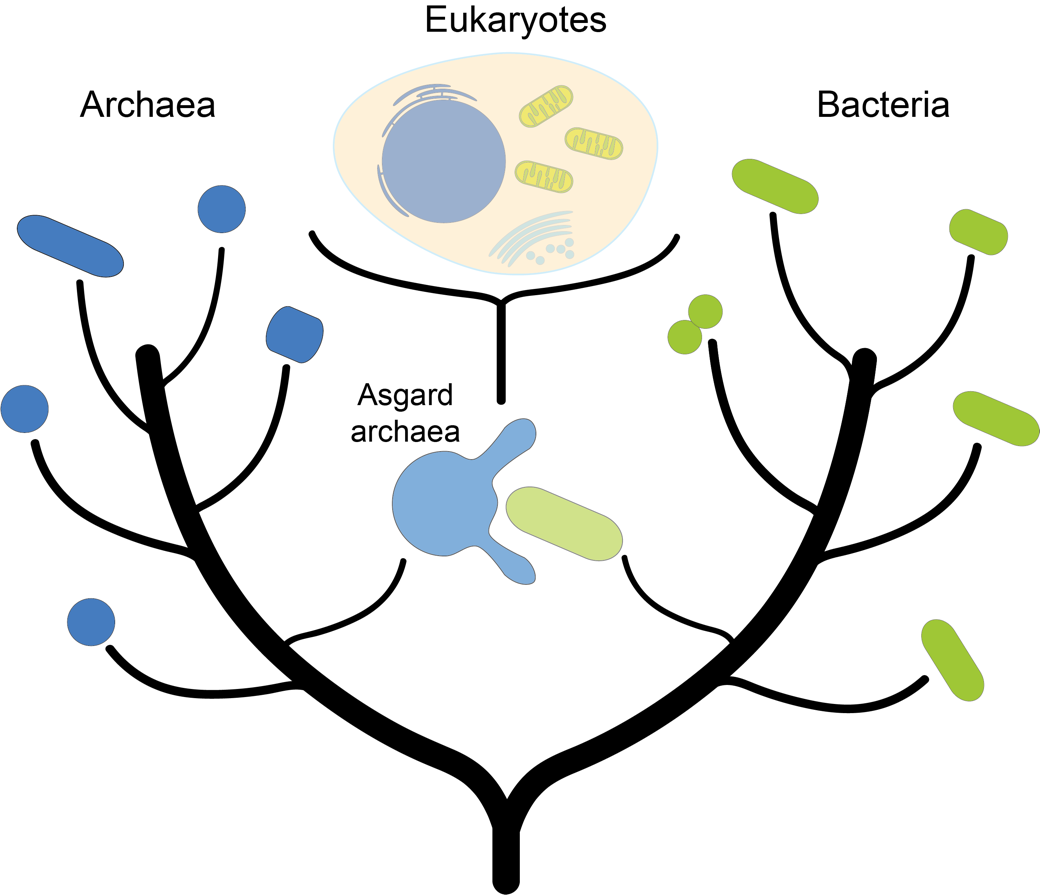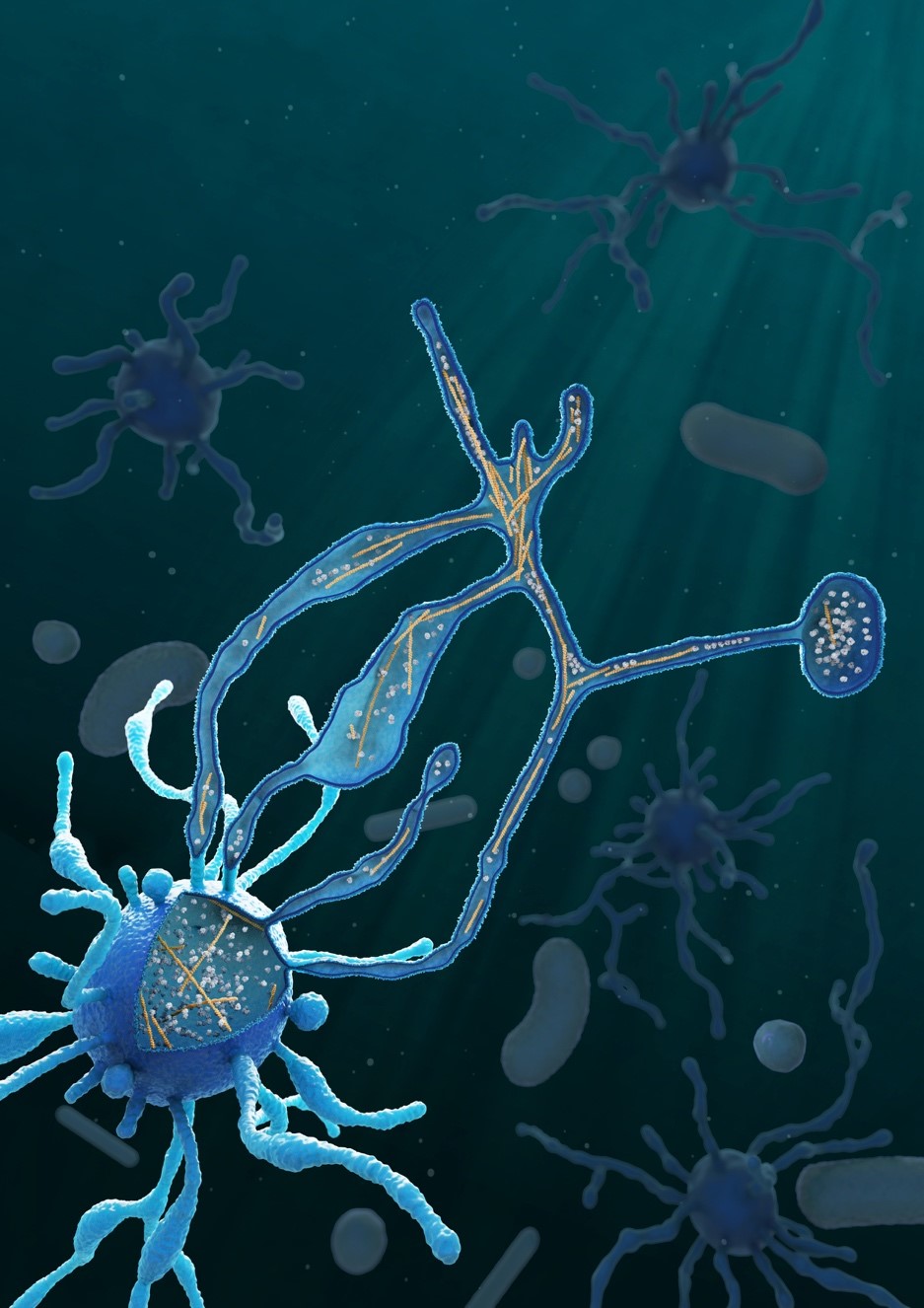Exploring the origin of complex life
How did complex organisms on Earth evolve? A collaboration between the research groups of Martin Pilhofer at ETH Zürich and Christa Schleper (University of Vienna) have now come one step closer to answering this question. The researchers succeeded in cultivating a special archaeon and characterized it using microscopic methods. This representative of the Asgard archaea exhibits unique cellular features and could be an evolutionary "missing link" towards the more complex life forms.

All living organisms can be divided into three major domains: Eukaryotes, Bacteria, and Archaea. Eukaryotes include the groups of animals, plants and fungi. Their cells are generally much larger and, at first glance, more complex than cells of bacteria and archaea. For example, the genetic material of eukaryotes is packaged in a nucleus, and the cells have a variety of additional compartments. In addition, the cell shape and transport within the eukaryotic cell is controlled by an extended cytoskeleton. But how did the evolutionary leap to such complex eukaryotic cells occur?
Most current models assume that archaea and bacteria played a central role in the evolution of eukaryotes. It is assumed that a primordial eukaryotic cell arose from a close symbiosis between archaea and bacteria about two billion years ago. In 2015, genome studies of environmental samples from the deep sea identified the group of "Asgard archaea," which are the closest relatives of eukaryotes in the phylogenetic tree. Unfortunately, no representative of the Asgard archaea could so far be cultivated in a way that would allow for a detailed characterization of their cellular structure and cell biology.

Asgard archaea cultivated from marine sediments
Christa Schleper's research group at the University of Vienna has now succeeded in cultivating a representative of this group. It originates from marine sediments from the coast near Piran in Slovenia. Because of its growth to relatively high cell densities, this representative can be studied particularly well. "It required extremely laborious precision work over several years, to obtain this sensitive organism in a stable culture in the lab," reports Thiago Rodrigues, one of the first authors of the study.
Asgard archaea have a complex cell shape with an elaborate cytoskeleton
The remarkable success of the Viennese researchers in cultivating an Asgard representative finally allowed the detailed examination of the cells by microscopy. The ETH researchers in Martin Pilhofer's group used a modern cryo-electron microscope to capture images of flash-frozen cells. "This method provides a three-dimensional insight into the mechanisms inside the cells," explains Pilhofer. "The cells consist of round cell bodies with thin, sometimes very long protrusions. These tentacle-like structures occasionally even appear to connect different cell bodies," says Florian Wollweber, who spent months tracking down the cells in the microscope. The cells also contain an extensive network of actin filaments, which has so far only been observed in more complex, eukaryotic cells. This indicates that elaborate cytoskeletal structures arose in archaea even before the first eukaryotes appeared and spurs evolutionary theories surrounding this crucial and spectacular process in evolution.
Future insights from the new model organism
"Our new organism, named 'Lokiarchaeum ossiferum', has great potential to provide further groundbreaking insights in the future. We can further use this experience for the cultivation of other Asgard archaea," comments microbiologist Christa Schleper. The scientists can now use the new imaging methods developed at ETH to study for instance the close interactions between Asgard archaea and their bacterial symbionts. Importantly, many cell biological processes such as cell division can also be studied in the future to shed light on the evolutionary origin of these mechanisms.
A similar version of this text was published by ETH Zürich and the University of Vienna.
Publication:
*Rodrigues-Oliveira T, *Wollweber F, *Ponce-Toledo RI, Xu J, Rittmann SKMR, Klingl A, ✉Pilhofer M, ✉Schleper C
external page Actin cytoskeleton and complex cell architecture in an Asgard archaeon
Nature. 2022.